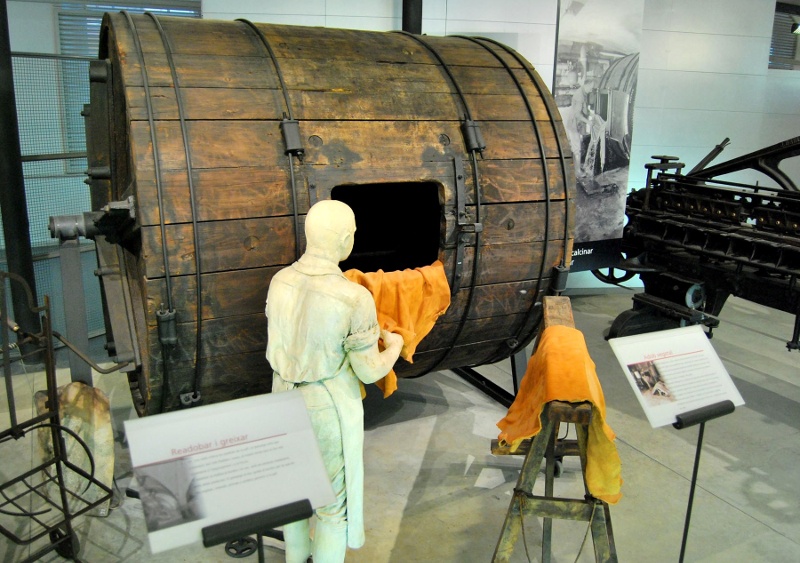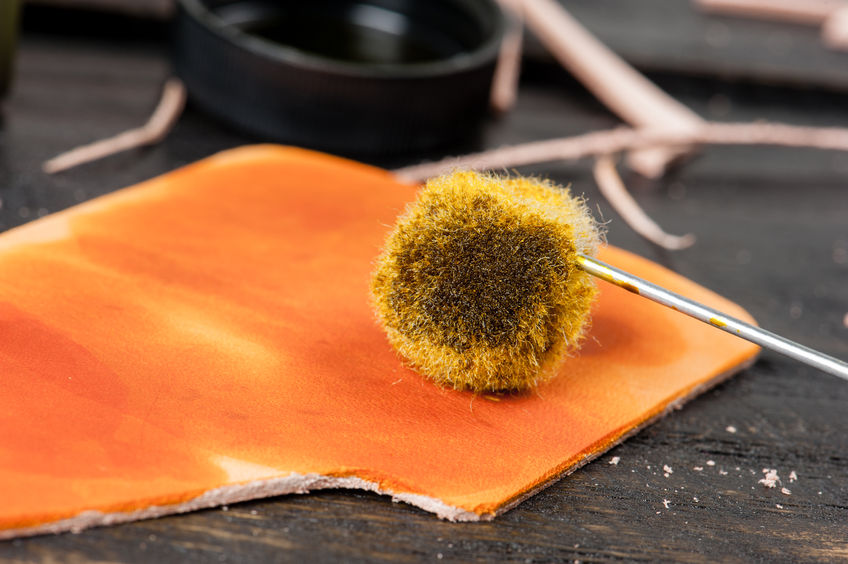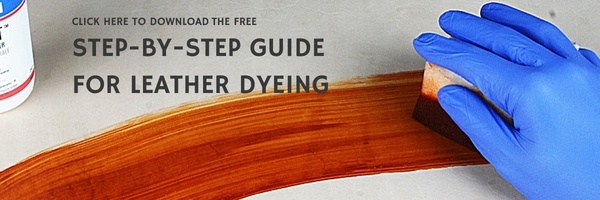Leather dyeing is a step that all leather crafters will face, sooner or late. There are different techniques for dyeing genuine leather which were born as artisanal techniques to be subsequently industrialized by tanneries. In industrial processes, the dyeing phase of leather is part of the so-called re-tanning operations. There are three main leather dyeing techniques:
DIP DYEING

The leather dip dyeing consists in soaking the natural leather in a dye solution, so as to impregnate the leather fibers and get a uniform and persistent coloring over time.
for Leather Crafters: leather dip dyeing process implies a certain organization and also a considerable consumption of leather dye. It’s necessary to organize a container that is able to contain enough dye to be able to completely immerse the piece of leather that you want to color. Both solvent-based leather dye or water-based color leather dye can be chosen. The leather should be left to soak for a fairly short period, and once extracted it must be hung up to dry. The drying will be more or less rapid depending on the type of leather dye used and the time of immersion. As longer the leather remains in the bath as longer the drying time will need. Due to the considerable difficulties in craft application, this process is not widespread among leather craftsmen.
for Tanneries: it’s one of the most common leather dyeing techniques used in tanneries either for veg-tanned leather than for chrome-tanned leather. The hides are introduced into a drum and soaked in a considerable quantity of water containing the leather dye. Generally, to increase the penetration of the dyes inside the leather fibers the temperature is raised to 50-60 °C, and the rotary movement of the drum further favors the penetration of the leather dyes.
BRUSH DYEING AND SPONGE DYEING

The leather brush or sponge dyeing process is carried out distributing the leather dye color on the leather surface by hand, using solvent-based or water-based leather dyes.
for Leather Crafters: hand leather dyeing it’s one of the most common leather dyeing process among craftsmen. This technique allows to quickly and uniformly color almost any type of leather for any type of item to be made. The waste of the paint is minimal and the result is very good. The technical features of the colored leather depend very much on which type of leather dye for leather crafters is used.
for Tanneries: in tanneries this technique is used above all when it is necessary to color delicate leathers, for example for the production of glove articles, where the prerogative is to maintain the original softness of the leather that could be altered by the strong mechanical action of the drum. Generally the leather is spread on a table (slightly convex) where the operator lays the leather. The leather coloring is then done using a horsehair brush, which is dipped in the leather dye and then used to dye the leather surface. This artisanal leather coloring technique is still used today in some tanneries, but only for the production of very fine leathers, as the cost of labor for coloring the leather as you can guess is very high.
SPRAY DYEING

The leather spray dyeing technique involves the use of several equipments to transfer the color leather surface.
for Leather Crafters: this leather dyeing technique it’s not very common among craftsmen as it is necessary to have a compressor for the production of compressed air, the spray gun and hopefully a suction system, which require continuous maintenance.
for Tanneries: in tanneries it’s instead a valid alternative to drum. It’s generally carried out using a special machine, consisting of a carousel rotary machine with all spray guns that rotate and spray leather dye simultaneously on the leather. The spraying technique has considerably shortened the industrial times as it is a very rapid process and requires a minimum employment of labor.
We can complete this topic specifying that leather dye for leather crafters are usually different from leather dye used in tanneries, even when the process is the same. Learn more about leather dye for leather crafters clicking here.



